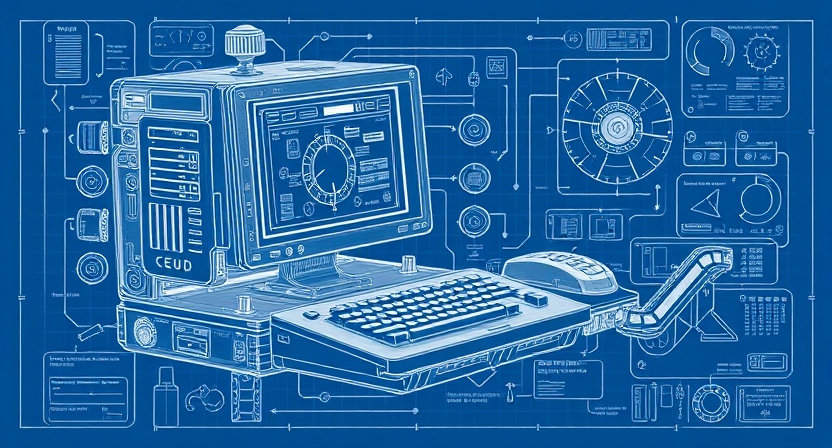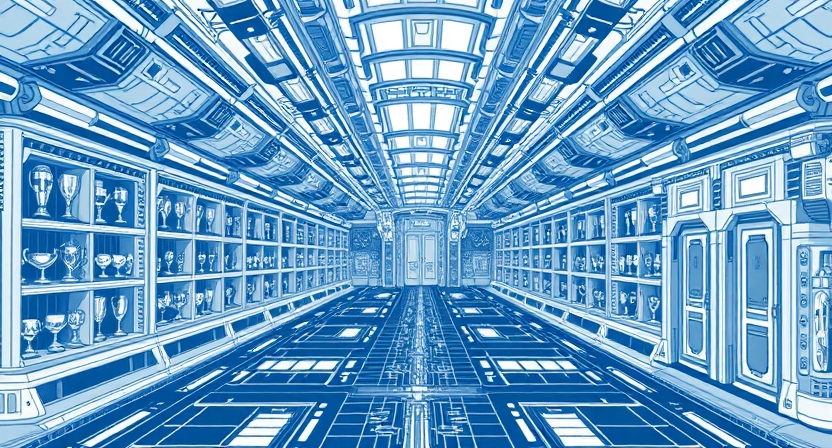
Intergenerational collaboration: how to build high-performing teams across age groups
"Baby Boomers and Millennials: Two Views on Work, One Reality to Build Together"
Generational diversity is an inescapable reality. You likely work alongside colleagues of varying ages, each bringing their own perspective and unique experience. This diversity can be an incredible asset to your company but also poses challenges. How can you harness generational diversity to create real synergy within your team?
Intergenerational employee engagement is key to turning these differences into strengths. By promoting mutual understanding and collaboration across generations, you can foster a more dynamic, innovative, and fulfilling work environment for everyone. This article will guide you through the benefits, challenges, and actionable strategies for fostering effective intergenerational collaboration within your organization.
1. The Importance and benefits of intergenerational collaboration
In your workplace, you are likely surrounded by colleagues spanning from Baby Boomers to Gen Z. This generational diversity is an undeniable reality and represents a unique opportunity for your organization. But what exactly is intergenerational collaboration?
Intergenerational collaboration refers to the productive and harmonious interaction between employees of different generations within an organization. It involves sharing knowledge, experiences, and perspectives among people of varying ages to achieve common goals and enhance the company's overall performance.
The business impact is significant. According to the annual Deloitte study, 2024 Gen Z and Millennial Survey: Living and working with purpose in a transforming world, multigenerational teams are 20% more innovative than age-homogeneous teams. Furthermore, they solve complex problems 50% faster. These statistics highlight the importance of creating a work environment that fosters synergy across generations.
Encouraging collaboration across generations in your company unlocks numerous benefits. Here are the main advantages you can reap:
Complementary skills and experiences
Each generation brings a unique set of skills and experiences. Encouraging their collaboration creates an environment where:
- Experienced employees can share their deep industry knowledge and leadership skills.
- Younger colleagues can contribute their mastery of new technologies and familiarity with emerging trends.
This complementarity enables your team to solve complex problems more effectively and tackle challenges from different angles.
Enhanced innovation and creativity
The diversity of generational perspectives is fertile ground for innovation. When people of different ages work together, they:
- Bring varied viewpoints to problems and opportunities.
- Combine traditional approaches with novel ideas.
- Stimulate each other's creativity, leading to more original and effective solutions.
A Harvard Business Review study found that multigenerational teams are more innovative than age-homogeneous teams.
Knowledge transfer
One of the most valuable advantages of intergenerational collaboration is bidirectional knowledge transfer. In this context:
- Experienced employees can mentor younger ones in their professional growth, sharing wisdom accumulated over the years.
- Younger employees can help their senior colleagues stay up-to-date on the latest technological trends and new working methods.
This knowledge sharing ensures continuity of skills within your organization and promotes continuous learning for everyone.
Improved company culture
Successful intergenerational collaboration can significantly enhance your company culture by:
- Promoting mutual respect and understanding across generations.
- Creating a more inclusive work environment where everyone feels valued.
- Strengthening team cohesion and the sense of belonging.
Better talent retention
When employees of all ages feel valued and have opportunities to learn and grow, they are more likely to remain loyal to your company. This translates to:
- Reduced turnover.
- Preservation of institutional knowledge.
- Improved employee satisfaction and engagement.
As workforce demographics continue to evolve, companies that master the art of intergenerational collaboration gain a significant edge in both attracting top talent and delivering exceptional business results.

2. Understanding each generation's unique strengths
To foster meaningful collaboration, it's essential to recognize the distinct strengths and value each generation brings to the workplace. While avoiding stereotypes, understanding general generational characteristics can help bridge communication gaps and leverage complementary abilities.
Baby Boomers (Born 1946-1964) Key Strengths:
- Deep institutional knowledge and industry expertise
- Strong work ethic and dedication
- Well-developed professional networks
- Crisis management and problem-solving skills
- Mentoring capabilities Baby Boomers often excel at navigating organizational politics and building lasting client relationships. Their experience-based intuition helps teams avoid repeating past mistakes.
Generation X (Born 1965-1980) Key Strengths:
- Independent thinking and self-reliance
- Adaptability to technological changes
- Strong critical thinking and pragmatism
- Balance between traditional and modern approaches
- Natural bridge-builders between older and younger generations Gen X professionals often serve as excellent translators between different generational perspectives, combining traditional values with openness to innovation.
Millennials (Born 1981-1996) Key Strengths:
- Digital fluency and technological adaptation
- Collaborative mindset and team orientation
- Comfort with diversity and global perspectives
- Purpose-driven approach to work
- Desire for continuous feedback and improvement Millennials typically bring energy and a fresh approach to established processes, along with strong collaborative skills that enhance team dynamics.
Generation Z (Born 1997-2012) Key Strengths:
- Native digital capabilities and tech intuition
- Entrepreneurial thinking and innovation
- Social consciousness and ethical focus
- Multitasking abilities
- Visual communication expertise Gen Z employees offer cutting-edge digital skills and often introduce organizations to emerging trends and technologies before they become mainstream.
By recognizing and valuing these diverse strengths, organizations can create complementary teams where different generations support and enhance each other's capabilities. This understanding forms the foundation for intentional team design that maximizes collective potential.
3. Overcoming communication barriers between generations
Effective communication is the cornerstone of successful intergenerational collaboration, yet it's often the greatest challenge. Different generations may have distinct communication preferences, vocabulary, and expectations that can lead to misunderstandings and friction.
Common communication challenges
- Preferred communication channels: Baby Boomers and Gen X might prefer face-to-face meetings or phone calls, while Millennials and Gen Z often default to digital channels like messaging apps or collaboration platforms.
- Communication style: Older generations typically value formality and structured communication, while younger generations may embrace a more casual, direct approach.
- Feedback expectations: Younger generations often expect frequent, immediate feedback, whereas older generations may be accustomed to more periodic, formalized feedback sessions.
- Technical language and jargon: Each generation has its own vocabulary and references that may be unfamiliar to others, creating potential barriers to understanding.
Strategies for breaking down communication barriers
- Create communication guidelines: Develop clear team protocols about which communication channels to use for different types of messages and expected response times.
- Make everyone create their own "Manual of me" / Playbook to share their communication preferences. Use Serendly Guide to Me to create these "Manuel of me",
- Practice active listening: encourage all team members to focus on understanding before responding, and to ask clarifying questions rather than making assumptions.
- Implement communication training: Offer workshops that help employees recognize different communication styles and adapt their approach when working across generations.
- Establish regular check-ins: Schedule consistent opportunities for team members to connect and align on projects, ensuring everyone has a voice regardless of their preferred communication style.
- Use mixed communication methods: For important messages, use multiple channels to ensure the information reaches everyone effectively.
- Address generational biases: Create a safe space to discuss and challenge assumptions about different age groups, fostering greater understanding and respect.
4. Four strategies to promote intergenerational collaboration
To fully realize the benefits of intergenerational collaboration, it’s essential to implement concrete strategies. Here are some approaches you can adopt to encourage positive synergy among different generations within your team.
A. Design age-diverse project teams
Intentionally create cross-generational teams for strategic projects:
- Assign diverse teams to innovation initiatives where different perspectives are particularly valuable
- Rotate leadership roles to ensure various generational perspectives influence decision-making
- Create balanced teams where no single generation dominates the group dynamic
Implementation Tip: Before launching the project, conduct a team-building session focused on understanding each member's unique strengths and communication preferences.
B. Implement reciprocal mentorship programs
Traditional mentorship flows from senior to junior employees, but reciprocal mentoring creates bidirectional knowledge exchange:
- Senior-to-Junior mentoring: Experienced professionals share industry wisdom, leadership skills, and institutional knowledge.
- Junior-to-Senior mentoring: Younger employees help senior colleagues master new technologies, understand emerging market trends, and adopt innovative approaches.
Implementation Tip: Pair participants based on complementary skills gaps rather than just age differences. Structure the program with clear goals and regular check-ins to measure progress.
Intergenerational mentorship programs can be highly beneficial. For instance, experienced employees can guide younger ones in their professional development, while younger employees can help their seniors adapt to new technologies. This creates an environment of mutual learning.
C. Facilitate knowledge transfer systems
Create structured approaches to preserve and share critical knowledge:
- Develop a knowledge management system that captures expertise from long-tenured employees
- Implement "day in the life" shadowing opportunities across generations
- Create cross-generational communities of practice around key business functions
Implementation Tip: Use video recording for knowledge capture when possible—it preserves non-verbal communication and is often more engaging for knowledge recipients.
D. Recognize and Reward Collaboration
Recognizing and rewarding efforts to work together fosters a positive climate. Whether through formal evaluations or informal appreciations, show your employees that their collaboration is valued and contributes to collective success.
By implementing these strategies, you can create an environment conducive to intergenerational collaboration, where every team member feels valued and engaged. In the next section, we’ll look at concrete examples of companies that have successfully achieved effective intergenerational synergy.

5. Success stories: companies excelling at generational diversity
Several international companies have implemented successful initiatives to foster intergenerational collaboration. Here are some inspiring examples:
L'Oréal: "Generations @Work" initiative
The French cosmetics giant launched the "Generations @Work" program to integrate various generations within the company. This comprehensive initiative:
- Created mixed-age innovation teams that revolutionized product development
- Implemented digital reverse mentoring between generations
- Developed age-inclusive recruitment and retention strategies
Results: L'Oréal reported a 25% productivity increase in mixed-age teams and saw a 20% improvement in employee engagement scores across all generations. As their CHRO noted: "The diversity of generations has become one of our greatest innovation assets, bringing together institutional knowledge with fresh perspectives."
Ref: For All Generations program
IBM: Reverse mentorship program
IBM implemented a multi-faceted approach to generational integration that includes:
- A reverse mentorship program where younger employees share digital expertise with senior executives
- Generational intelligence training for all people managers
- Cross-generational innovation labs that tackle business challenges
- Flexible work arrangements that accommodate different life stages
Results: IBM's approach yielded a 15% increase in cross-functional collaboration and contributed to a 30% acceleration in digital transformation initiatives. Ref: IBM Reverse Mentoring
Procter & Gamble: "Flex@Work" and "Generation Blend"
P&G developed complementary programs to address both the structural and cultural aspects of intergenerational collaboration:
- The Flex@Work program offers customized work arrangements based on individual needs rather than generation-based assumptions
- The Generation Blend initiative creates intentional cross-generational teams for product innovation targeting diverse consumer demographics
- "Experience Matters" program retains the expertise of retirement-eligible employees through flexible consulting arrangements
Results : P&G's initiatives have contributed to a 22% increase in innovation success rate and a 35% improvement in knowledge retention metrics. Ref: P&G’s Sustainable Spaces Prioritize Collaboration, Productivity and Wellness
These success stories demonstrate that effective intergenerational collaboration requires intentional strategy, sustained commitment, and thoughtful implementation. The organizations that excel in this area view generational diversity not as a challenge to overcome but as a competitive advantage to cultivate.
Conclusion: The competitive advantage of generational synergy
Intergenerational collaboration is not just a trendy concept—it’s a necessity for companies that wish to remain competitive and innovative. By implementing the strategies we’ve explored, you can create a work environment where every generation feels valued and can fully contribute.
The most successful organizations approach generational diversity with:
- Curiosity rather than judgment about differences
- Intentionality in creating collaborative structures and processes
- Flexibility to adapt approaches based on feedback and results
- Commitment to ongoing learning and improvement
As you implement the strategies outlined in this guide, remember that the goal isn't to eliminate generational differences but to leverage them as a source of organizational strength. Each generation brings valuable perspectives shaped by their unique historical and cultural experiences—together, they create a more complete picture that drives better business outcomes. The future belongs to organizations that can harness the collective wisdom, energy, and insights of all generations. By investing in effective intergenerational collaboration today, you position your organization to navigate change successfully and maintain a sustainable competitive advantage for years to come.


